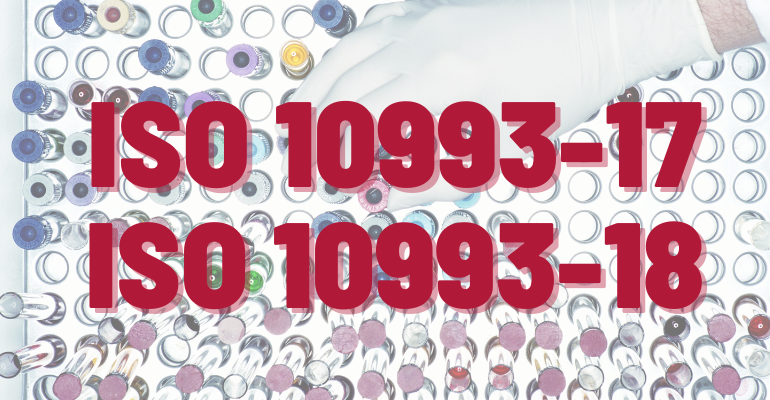ISO Chemical Characterization for Medical Devices

By comprehensively evaluating the allowed limit of extractable chemical levels in medical devices, manufacturers can ensure that their device is safe for its intended use.
The International Organization for Standardization (ISO) 10993 series provides guidelines for the biological evaluation of medical devices, ensuring the safety from their intended use. This series outlines the various biological endpoints that need to be evaluated dependent upon the device type. A Biological Evaluation Plan (BEP) can help summarize which endpoints need to be addressed, alongside the corresponding laboratory testing. Using guidance from ISO 10993-17 and ISO 10993-18, a Toxicological Risk Assessment (TRA) can be used to evaluate the potential for acute system toxicity, subacute toxicity, subchronic toxicity, chronic toxicity, genotoxicity, or carcinogenicity that may be associated with the devices’ extractable chemical profile. While these biological endpoints can also be evaluated in vivo, ISO 10993-17 and ISO 10993-18 leverage chemistry testing to replace the need for animal testing.
ISO 10993-18 focuses on the chemical characterization of medical devices and provides guidance on the selection of appropriate analytical techniques, extraction solvents, and screening limits/analytical evaluation thresholds for the test methods. Each of these aspects must be taken into account when designing the study, meaning special care and expert design proves beneficial. The outcome is the possible identification and quantification of the chemicals present in the extracts from the medical device. These results are not a strict pass/fail and must be evaluated for patient safety depending on the intended device use, which is done through the TRA.
If Chemical characterization has already been completed, you may be asking yourself “I have an extensive chemistry report… now what?”
ISO 10993-17 provides guidance to evaluate the data set that is produced from the various analytical chemistry techniques. This standard focuses on the establishment of allowable limits and tolerable exposures for the extractable and leachable substances that may be exposed to the patient. Once the extractable chemicals have been identified, their toxicological profiles will be evaluated through literature research by a toxicologist. During this literature review, allowable limits for the relevant human exposures to the chemical constituents will be derived.
The process of establishing allowable limits for these substances involves a range of different factors: the intended use of the device, the populations who may use the device, the intended route of exposure, and the studies/literature used to derive said limits. Once these allowable limits are calculated for each constituent listed within the chemistry report, a full toxicological risk assessment is written. This assessment goes beyond what is outlined in ISO 10993-17 and ISO 10993-18; regulatory guidance is leveraged, with additional requirements from ISO 10993-1, ISO 10993-2, ISO 10993-3, ISO 10993-11, ISO/TS 21726, and ISO 14971.
The toxicological risk assessment includes the calculation of ‘margin of safety’ (MOS) for each chemical constituent. This is a numeric value, for the ratio between the tolerable exposure to the amount of constituent seen, where a MOS value over ‘1’ could be deemed safe for that population. While there are more moving parts that go on behind the scenes, especially with determining a conservative tolerable exposure value, the MOS is the outcome that summarizes exposure to that chemical constituent. In addition, the toxicological risk assessment will provide an overall conclusion of the likelihood of an adverse effect from the device. By taking a comprehensive approach to evaluate the extractable substances, manufacturers can ensure that their device is safe for its intended use. It is therefore critical that these assessments are completed by seasoned toxicologists and biocompatibility experts with extensive regulatory experience. At Nelson Labs, extractable/leachable chemistry studies are conducted at one of two state-of-the-art facilities (Nelson Labs Salt Lake City and Nelson Labs Leuven) and the results are evaluated by our team of biocompatibility experts, including multiple board certified (DABT) toxicologists.










